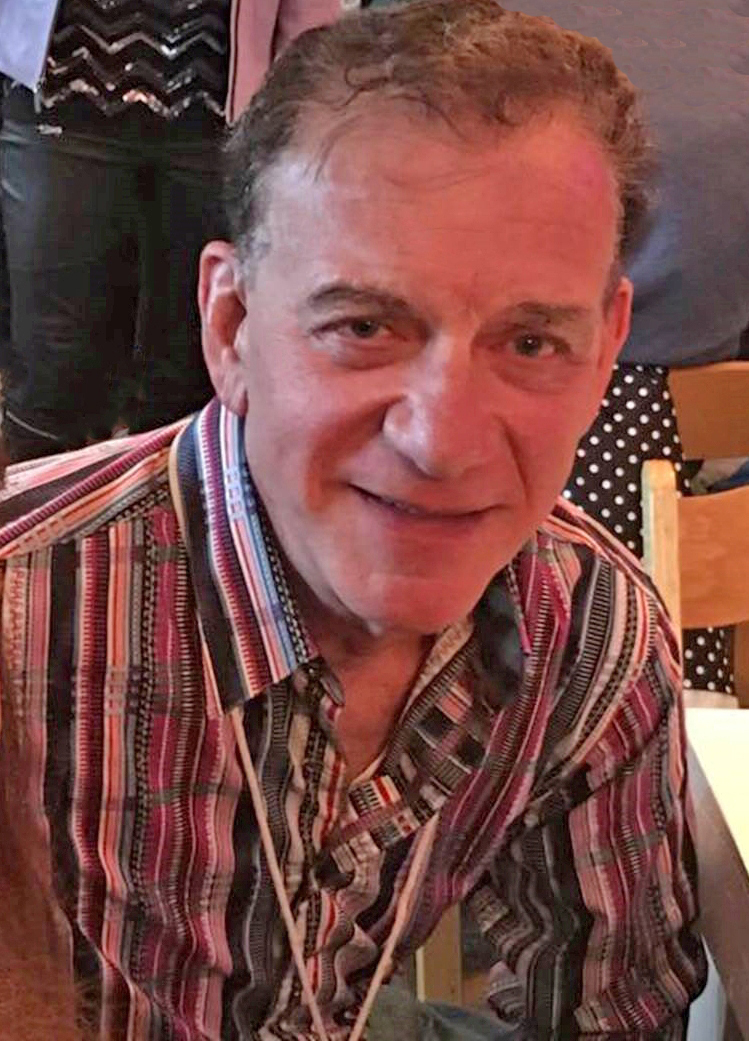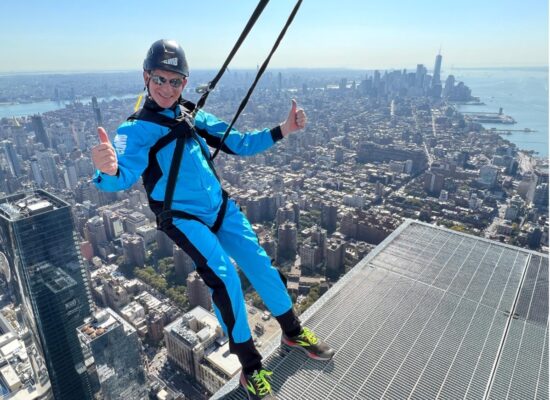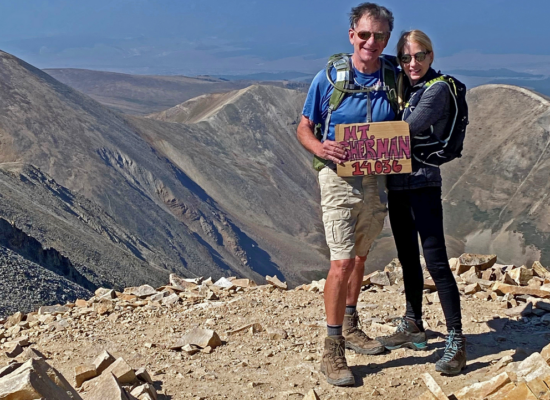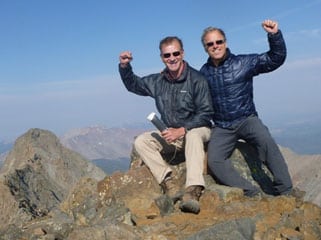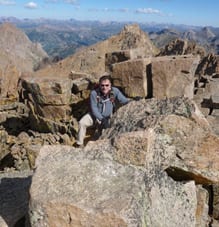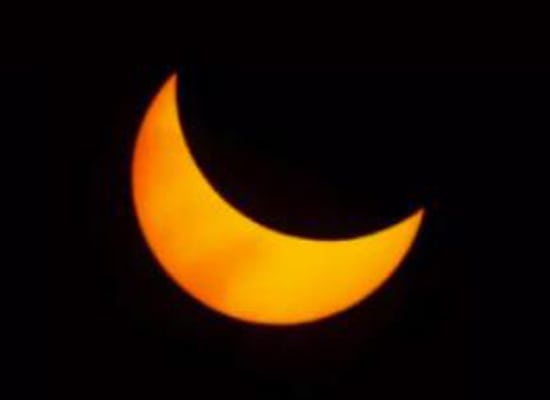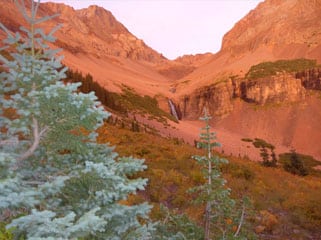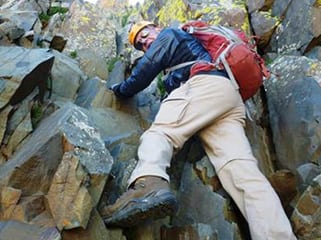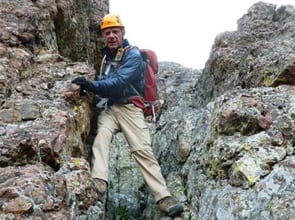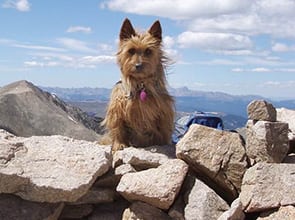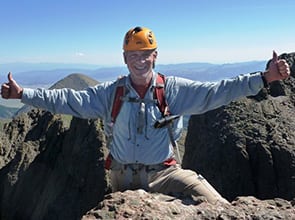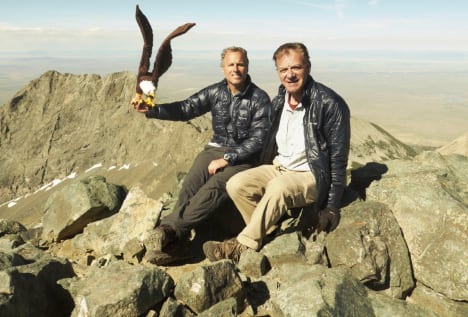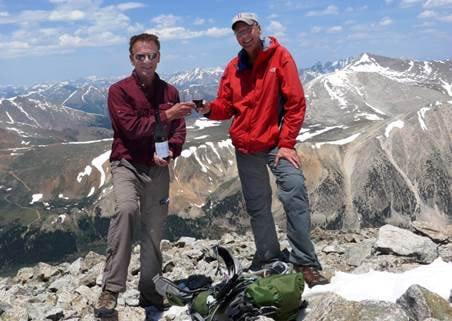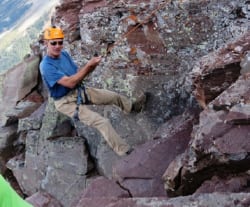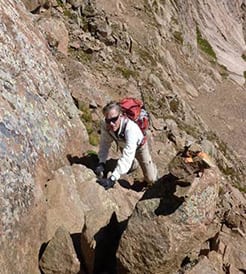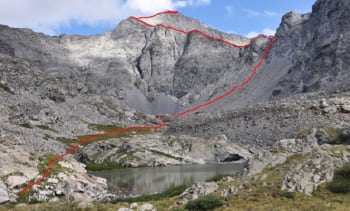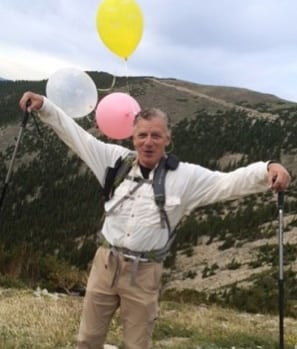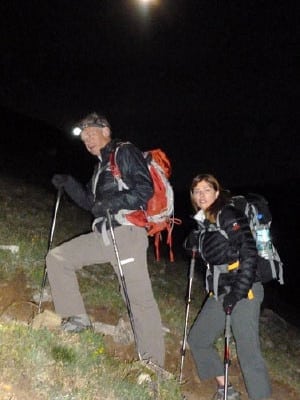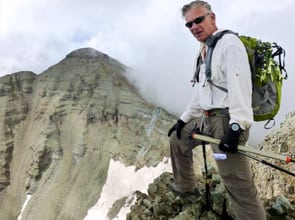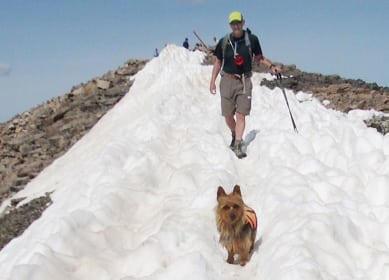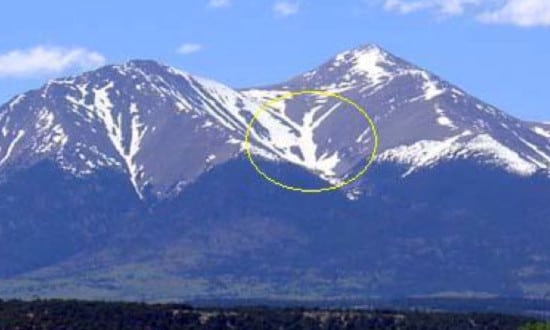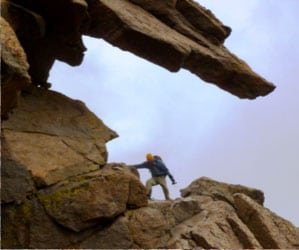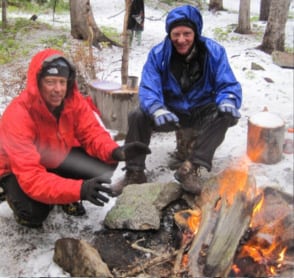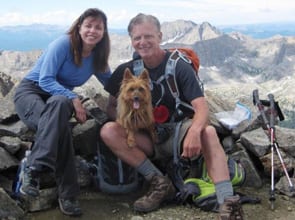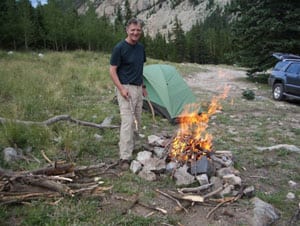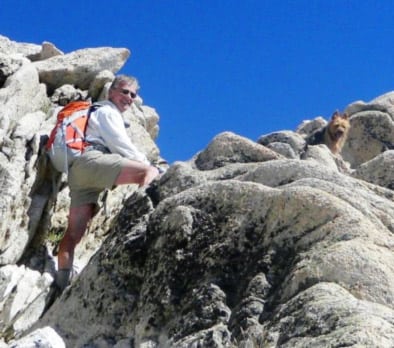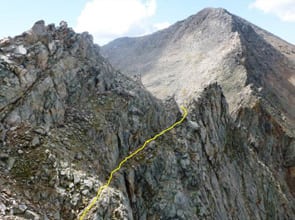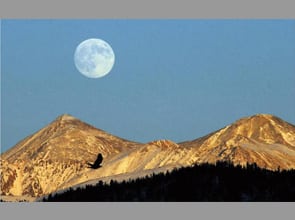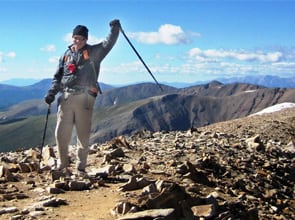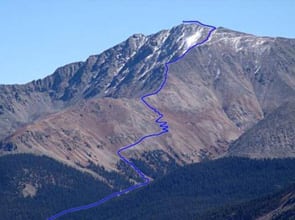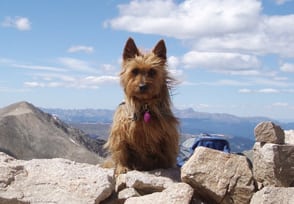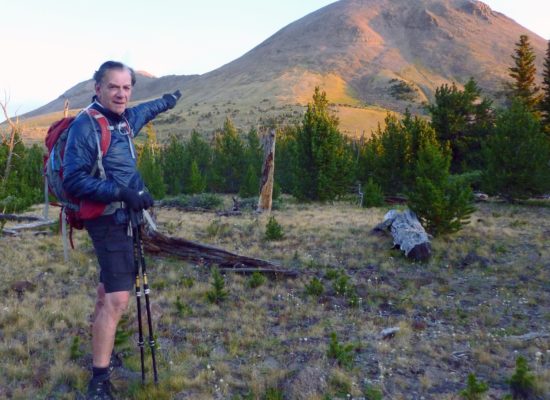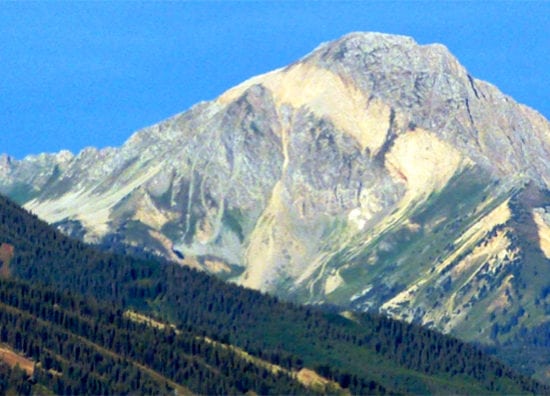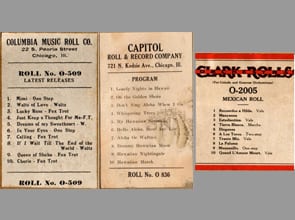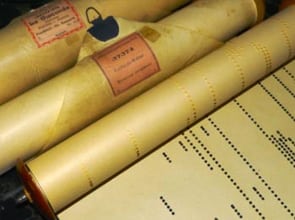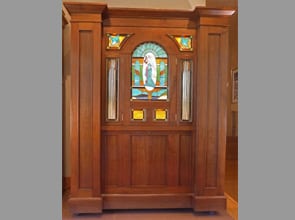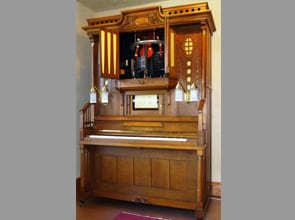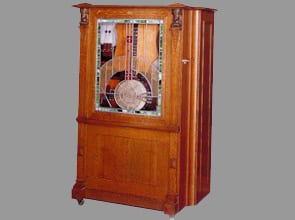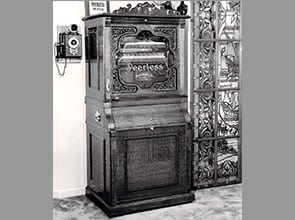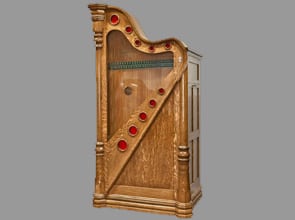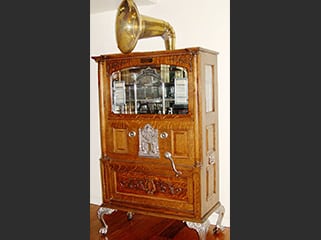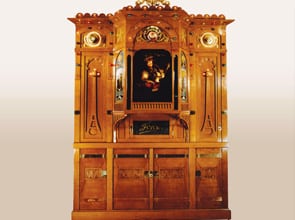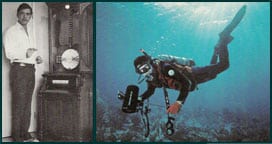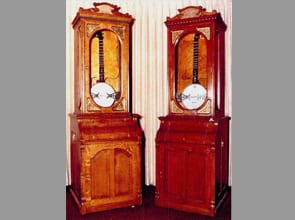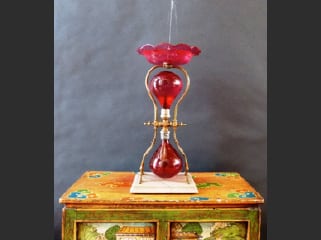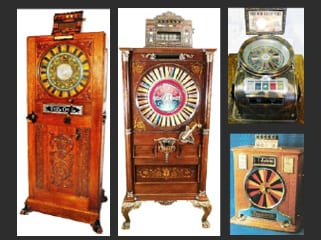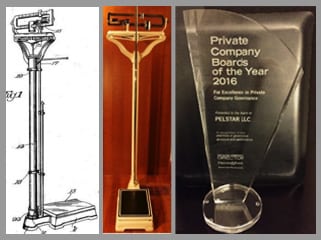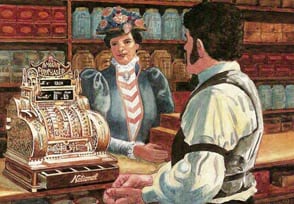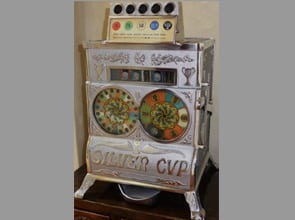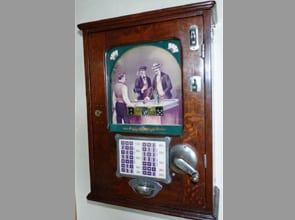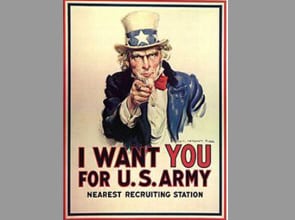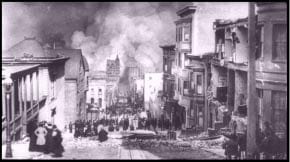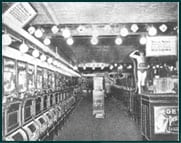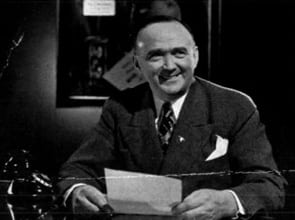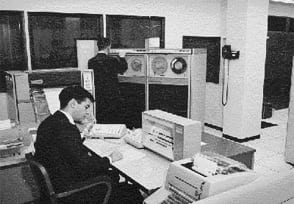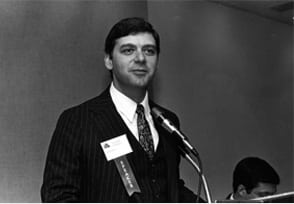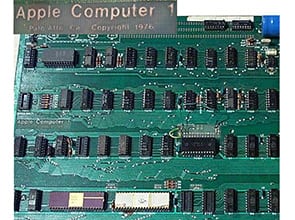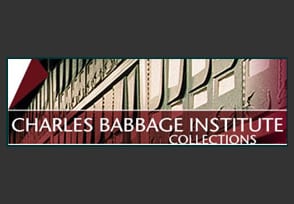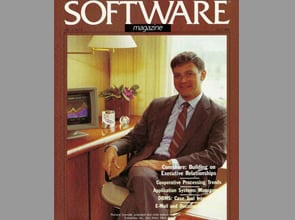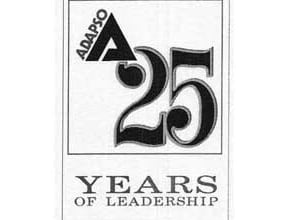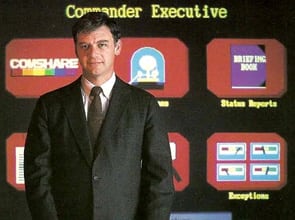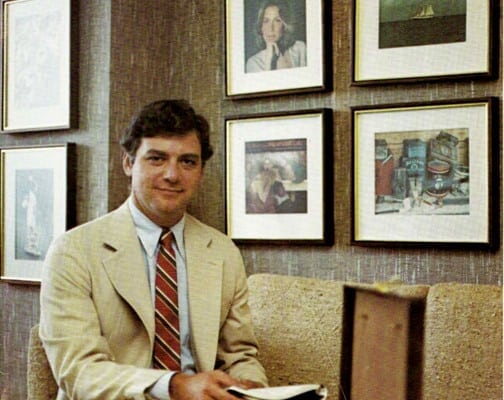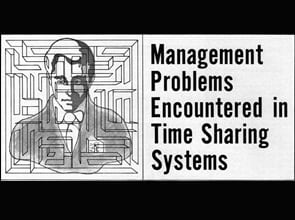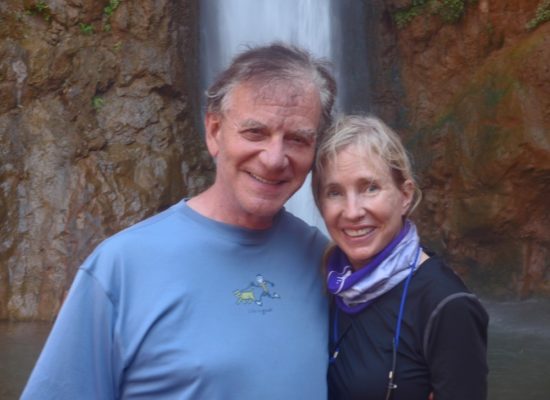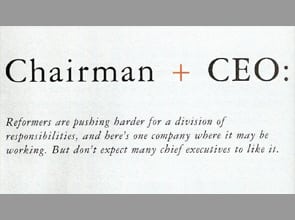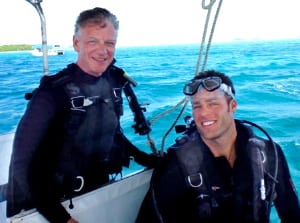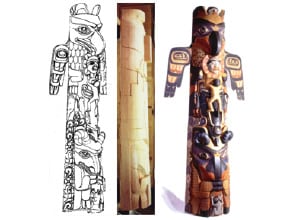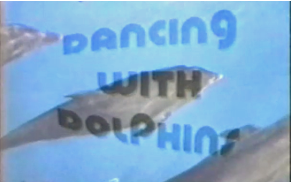The Dog Who Took Me Up A Mountain
By Rick Crandall and Joe Cosgriff, published by HCI
The uplifting story of two unlikely mountaineers: a man of later age and a fearless pint-sized pup summiting the highest peaks in the Rockies
See NY Post review and recommendation HERE
Learn about or purchase a book HERE
FOLLOW ME ON FACEBOOK @ www.facebook.com/RickCrandallBooks
■ CRANDALL LIBRARY ■
» COLORADO 14ers «
My Favorite 14er Climb Stories
» Crestone Peak … and a Self Rescue!
» North Maroon Peak – Going Technical
» Capitol Peak – the King!
» Blanca Peak – Source of Indian Chief Headfeathers
» Sunlight Peak – a Beauty in the San Juans
» Pyramid Peak – a Dream Climb
» El Diente – South Slopes
» Windom Peak – the Most Awesome 14er Summit
» Mt. Wilson – Poster Child for the San Juans
» OTHER CLIMBS «
Other Climb Stories
-
The Buffaloes are a pair of thirteeners sitting all by themselves surrounded by fourteeners. Not to be intimidated, they present their own set of challenges, not the least of which a sparsity of information on how to climb them. We figured it out, at times, the hard way.
-
Mt. Daly is on the other side of the saddle from Capitol Peak. It is one of the most visible mountains to those traveling between Aspen and Snowmass. While not a 14er, it is a named 13er with a fun Class 3 ridge-crest climb that is less frequently done. There is also not much written about the best way up, solved here in this story.
-
Difficulty: Class 2 Exposure: None Summit: 13,193’ Elevation Gain: 1800’ Roundtrip: 7 miles Trailhead: Independence Pass parking lot at 12,050’ Climbers: Route 1: Rick Crandall; Rick Peckham July 11, 2015 Route 2: Rick Crandall, Shan Stuart & Emme the 14er Dog July 20, 2006
-
Superstition Mountain – hidden gold, subterranean extra-terrestrials, Indian legends and a big day of bouldering and rock climbing. Fortunately no cactus jabs or rattlesnake strikes.
-
Twining Peak, 13,711’ near Aspen, Class 2 and dog-friendly. Also called Blue Peak, it is approached on a largely unmarked route that summits Blarney Peak first in order to access a saddle and ridge to Twining. Emme and Alfie, Australian Terriers made the summit with us.
-
Grizzly Peak is the tallest of all 584 thirteeners in Colorado. We did some route finding to get the best way up – and got up close and personal with "gendarmes."
-
Mt. Sopris is the icon of the Aspen/Roaring Fork Valley – Happy Birthday to Brett Crandall! This has some route detail since there is not much Mt. Sopris route information that I could find. While not a fourteener, it is a big mountain from bottom to top!
» EARLY MUSIC MACHINES «
-
“Listen to a selection of O-Roll music played on the Coinola SO – scroll down, click on any tune or sheet music cover” The history of the development of Coinola machines and the O-Roll format can be found at https://www.rickcrandall.net/a-nickel-for-music-in-the-early-1900s-evolution-of-the-american-orchestrion/ . The O-roll was introduced in 1913. It features perforations for extra instruments plus a […]
-
Over 700 of the total 1270 “O” Rolls estimated ever made by QRS, Columbia, Capitol and Clark are catalogued and presented including tune composers.
-
The complete catalog of all 933 music rolls ever originally produced by Hupfeld for the Phonoliszt-Violina: Catalog Sorted by Roll Number Catalog Sorted by Composer. Also provided is the catalog of the 268 rolls chosen from over 20 collections and museums – and recut with the goal of producing the "reference set" of music for the PV.
-
The heyday of American coin-operated automatic music instruments was from 1898 – 1928. Perforated-paper music rolls were an important medium for national distribution of music including blues, jazz, rags and dance tunes. The Coinola SO “super orchestrion,” rare today, was the pinnacle of American-made music machines playing the highly-acclaimed Columbia and Capitol O-roll arrangements.
-
Phonoliszt-Violina: In the 1900 to 1930's the automatic music machine replaced live performers accelerated by union pressures for uneconomic rates for performers. Many types of player pianos, orchestrions, and violin and banjo players) grew rapidly as an early musical media for playing music in commercial locations and homes.
-
1915 coin-operated mechanical orchestra with banjo made by Engelhardt Piano Company; helped make ragtime a national music form;; music by National Music Roll Co.;
-
The Peerless line of coin-op player pianos, nickelodeons and orchestrions were the earliest roll-operated coin-operated music machines on the market; Companies involved were the Roth & Engelhardt Co., Peerless Piano Player Co., National Music Roll Co., Engelhardt Seybold Co. and Engelhardt Piano Company.
-
The Automatic Harp invented by J.W. Whitlock and popularized by the Wurlitzer Company. Whitlock was a classic American inventor, business leader and entrepreneur who became the heart and soul of Rising Sun, Indiana in the early 1900’s. His life, his inventions, his boat-racing competitions on the Ohio River and his businesses are described in a storied life pursuing the American Dream. The Harp is an early automatic music machine that helped spread ragtime as a national music...
-
The Gabel Automatic Entertainer dates to 1905 and is the very first disc record-changing multi-selection phonograph invented by John Gabel; His Automatic Machine and Tool Company competed with Victor in massive patent fights that Gabel finally won. The Entertainer took first in several Exposition competitions for tone quality including over Victor and others. This article includes important disclosures from the diary that John Gabel kept while he was doing his inventing of both...
-
1910 German-made mechanical orchestra shipped through newly-opened Panama Canal to Nevada City, California to play in a gold rush saloon owned by Ernie Schreiber. Named the Popper Felix orchestrion, it has extensive instrumentation for playing classical as well as popular music. Uncovered by Rick Crandall, restored by Hayes McClaren and now in the Jim Krughoff collection.
-
Coin-operated musical instruments; Gay 90’s America; coin-op nickelodeon Encore Automatic Banjo; Mills Novelty Company slot machines; Violano Virtuoso automatic violin player; scuba underwater photography; Wildflower photography.
-
The Encore Automatic Banjo is one of the first commercialized automatic coin-op music machines in1897. It operated from a perforated paper roll controlled in similar fashion to player pianos. This article is based on original company records of the American Automusic Company and the Auto-Manufacturing Company.
» EARLY INVENTIONS «
-
Based on a pneumatic principle by physicist Heron of Alexandria in AD 62, the Automatic Crystal Fountain combines beauty with captivating geyser-like fountain using no apparent motive power.
-
John Gabel: His personal account of immigrating to America, overcoming great odds; his role creating the gaming machines that fueled the early growth of the Mills Novelty Company (the Klondyke, Monte Carlo, Kalamazoo and The Owl). Then in 1897 he started his own company, the Automatic Machine & Tool Company, inc. rising to success creating and selling coin-op gambling, music and automatic vending machines.
-
Pelstar, LLC: 97 Years of evolution from the original invention of the Health o meter™ doctor’s beam scale. In 2016 Pelstar was honored with the Private Company Board of the Year Award, growing at triple the market rate and achieving top market share in the Americas while practicing exceptional Board and Company governance. Rick Crandall, Executive Chairman
-
James Ritty invention of the cash register 1878; Incorruptible Cashier; Cash Recording Machine first cash register; National Cash Register Company (NCR) founded by John Patterson, history of marketing; Thomas Watson Sr. fired from NCR, founded IBM based on International Time Recording Company & Computer-Tabulating-Recording; Rick Crandall and Sam Robins authors. Out of print but some available: Purchase at https://www.rickcrandall.net/shop-3/
-
Created by Charles Fey circa 1907 and followed by Caille in 1911, both seeking a departure from the onslaught of 3-reel slot machines. Fancy graphics and interesting play kept this machine in the lineup for over a decade.
-
The Domino is a payout gambling machine that was invented by an Englishman, based in France, manufactured in Germany and sold mainly for the U.S. market in the 1920’s.
-
The origins of the famous Uncle Sam national imagery and how it made its way into Arcade machine “art.” The very rare Caille and Howard Uncle Sam coin-operated strength tester machines.
-
The 1890's: Pioneering risk-takers defined by the California Gold Rush; battle-tested by the 1906 earthquake; Charlie Fey invents the Liberty Bell slot machine creating an industry that persists to this day.
-
Caille coin-op machines; player pianos; coin-operated gambling; trade stimulators; Automatic Chime Bells; Toledo Orchestrion; Berliner Multiphone; music boxes;
-
1930’s Alden Scott Boyer created Chicago Coin Club and the Chicago Coin Device Museum; first coin-op machines museum; roll-operated musical instruments; player piano; coin-operated machines; perforated roll music; pneumatic mechanisms; collecting coin-op machines; Svoboda’s Nickelodeon Tavern
» COMPUTER HISTORY «
-
First computer host to connect to the Internet; SDS 930; Scientific Data Systems; Stanford Research Institute (SRI); Bolt, Berenak & Newman IMP, IMP2; ARPA Network; Where the Wizards Stay Up Late;
-
Founding of Comshare 1966; Rick Crandall timesharing pioneer; joint development with Tymshare, U. Cal. Berkeley; interactive computing; SDS930; SDS940; Scientific Data Systems Sigma 9; timesharing operating systems; early tech IPO in 1968; Crandall Chairman of ADAPSO; ITAA; transition to software products; System W; decision support system; multi-dimensional modeling; On Line Analytical Processing (OLAP), distributed computing; Xerox PARC; interactivity; EIS; Executive Information...
-
Steve Wosniak and Steve Jobs invention of the Apple 1; formation of Apple Computer Company; major improvement over the Teletype; forshadowing the eventual decline of timesharing; Southwest Technical Products PR 40 alphanumeric printer for Apple I; Larry Nelson original Apple 1 owner and sale to Rick Crandall.
-
Starting in 1964 University of Michigan Computing Center; Joint development among Comshare (Rick Crandall), Tymshare (Tom O’Rourke, Dave Schmidt, Ann Hardy, Norm Hardy), SDS & U Cal Berkeley (Butler Lampson, Mel Pirtle and Peter Deutsch) in 1965 to 1966; start of multiplexors and networks; transition to software; IBM partnership; ADAPSO IIA merger attempt; partnership with Dow Jones; decision support systems; EIS and Xerox PARC; Enterprise Software Roundtable – software CEO...
-
Comshare partnership with IBM; EIS marketplace; IBM Cooperative Software Agreement: competition in Executive Information Systems; Execuchart; EIS Briefing Book; IBM Systems Application Architecture, SAA partners; Dow Jones partnership with a software company; partnership with MSA Management Sciences America John Imlay; Comshare transition from timesharing to a software company.
-
History of computer software and services; competition with IBM, history of Adapso advocacy; formation and growth of ADAPSO; Non-tariff trade barriers; software as a distinct industry; software international balance of payments; example of ADAPSO helping ComShare transition to a software company
-
influence of Xerox PARC visit in 1978; Xerox Alto; first mouse, icons, graphical human interfaces; GUI,WYSIWYG, development of Executive Information Systems 1984; EIS; touch screen graphical human factors; Commander EIS; Executive use of computers; executive computing; the CEO Goes On Line; Jack Rockart, business graphics; Strategic Information At Your Fingertips; Warren Mcfarlan at Harvard Business School teaching EIS; first ISV partnership with IBM Information Center; IBM marketing...
-
Comshare history; Comshare timeline chronology; transition from timesharing to software; Execuchart mouse based graphics terminal; Executive team Kevin Kalkhoven; Dick Eidswick; Ian McNaught Davis; Don Devine; Wally Wrathall; Ann Arbor, Michigan’s focus on research and technology
-
the early challenges managing time-sharing systems; load balancing, scalability, human factors; interactive languages; review of in-house vs. commercial timesharing services
» OTHER STORIES «

